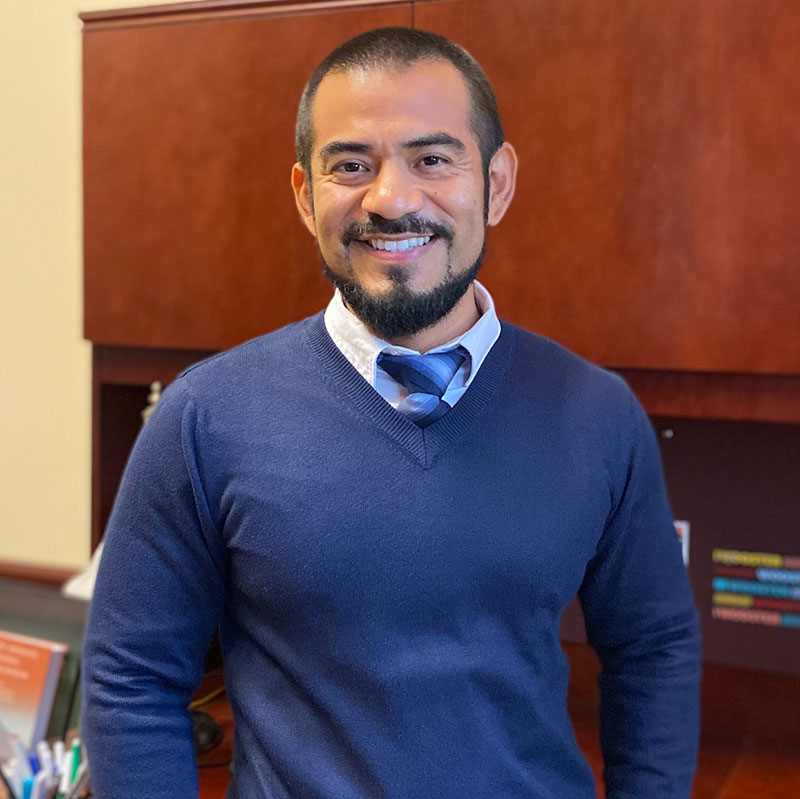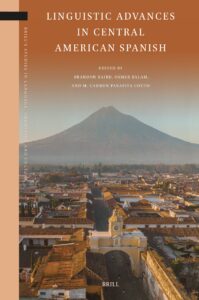Degrees
- B.A., University of Belize
- M.A., TESOL, Southern Illinois University-Carbondale
- Ph.D., University of Florida
Areas of Interest
- Hispanic Linguistics
- TESOL
- Spanish Sociolinguistics
- Bi/Multilingualism in the Spanish-speaking World
- Fundamentals of Language Contact
- Spanish and Spanglish in the U.S.
- Theory and Practice in Second Language Acquisition
- Spanish Phonology
- Spanish Pragmatics
- Central American Spanish
- Spanglish in U.S. Latino Literature
- Metaphors in English free verse poetry
Courses Taught
- Beginning Spanish
- Intermediate Spanish
- Spanish Phonology
- Structure of Modern Spanish
- Spanish and Spanglish in U.S. Media (FYS)
Key Publications
 Balam, O., Ross, D., & Bravo, A. (2024). The use of agarrar ‘grab, take’ verb constructions in Belizean Spanish: An intergenerational analysis. Isogloss: Open Journal of Romance Linguistics, 10(1), 14, 1-27.
Balam, O., Ross, D., & Bravo, A. (2024). The use of agarrar ‘grab, take’ verb constructions in Belizean Spanish: An intergenerational analysis. Isogloss: Open Journal of Romance Linguistics, 10(1), 14, 1-27.- Baird, B., Balam, O., & Parafita Couto, M. C. (2023). Linguistic Advances in Central American Spanish. Leiden, the Netherlands: Brill.
- Balam, O. (2021). Beyond differences and similarities in code-switching and translanguaging research. Belgian Journal of Linguistics, 35, 76-103.
- Balam, O., Parafita Couto, M. C., & Stadthagen-González, H. (2020). Bilingual verbs in three Spanish/English code-switching communities. International Journal of Bilingualism, 24(5-6), 952–967.
- Balam, O., & Prada Pérez, A. (2017). Attitudes toward Spanish and code-switching in Belize: Stigmatization and innovation in the Spanish classroom. Journal of Language, Identity and Education, 16(1), 17–31.
For further details on scholarly work:
Osmer Balam on Google Scholar // Osmer Balam on ResearchGate
Independent Study Advising
- “Trade, aid, and dependency: The impact of U.S. bilateral food aid on trade and welfare in Mexico,” by Rayan Dos Passos. 2025. (Double major in Global & International Studies in Economics and Spanish)
- “Bilingual compound verbs: A comparison of Orange Walk, Belize and the Yucatan Peninsula, Mexico,” by Lidia Pérez Leutza. 2023. (Latin American Studies major at Leiden University, the Netherlands) *External supervisor
- “Un análisis léxico y sociolingüístico del shesheo en la canción “La Mushasha Shula” de Espinoza Paz,” by Penelophe Pintor. 2023. (Spanish major)
- “El lenguaje es la hoja de ruta de la diversidad: La brecha digital en la comunidad latina inmigrante antes y durante la pandemia,” by Berenice Hernández. 2023. (Spanish major)
- “La percepción de la variación sociolingüística en los dialectos de español en los Estados Unidos,” by Catherine Baker. 2022. (Spanish major)
- “A gag tied too tight becomes liberty’s noose: A linguistic analysis of vagueness in Spain’s Ley Mordaza,” by Jacob Shelton. 2022. (Double major in Spanish and History)
- “Las emociones y el cambio de código: Un estudio sobre cómo las emociones provocan el cambio de código en bilingües español-inglés,” by Camryn Bragg. 2021. (Spanish major)
- “Multilingual literature of the New World: A literary and semantic study of Spanglish in Susana Chávez-Silverman’s Killer Crónicas,” by Justin Garibotti. 2021. (Double major in Spanish and English)
- “El español en contacto con el maya: Un análisis de las actitudes e identidades lingüísticas de los kaqchikeles en San Jorge la Laguna, Sololá, Guatemala,” by Tristan Donohoe. 2020. (Spanish major)


 Balam, O., Ross, D., & Bravo, A. (2024).
Balam, O., Ross, D., & Bravo, A. (2024).